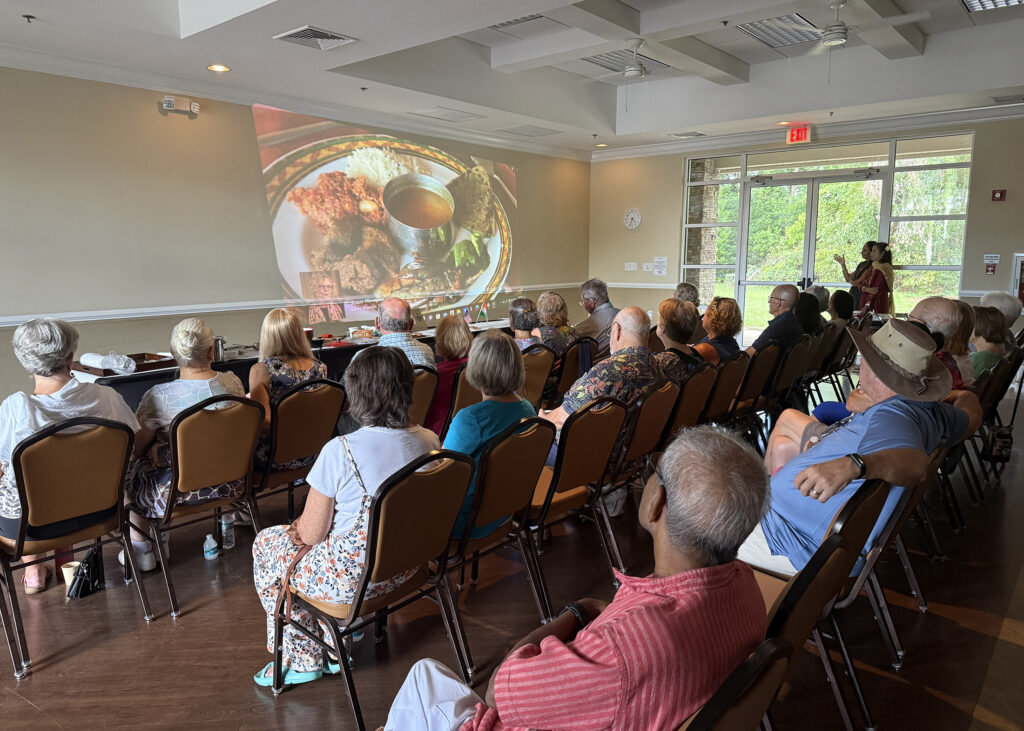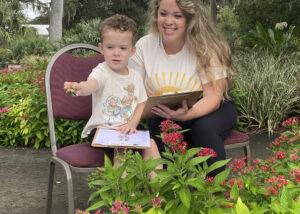On Friday, Aug. 15, the Arbor Conference Center Dance Studio I was filled with the aromas of spices, simmering tomatoes, and rich cream as more than 60 residents gathered for a lively culinary demonstration. Attendees were treated to an engaging exploration of one of India’s most beloved dishes – butter chicken – guided by Shashi Ray and Usha Vargas.
The demonstration began with a warm welcome and introduction, followed by a short video presentation highlighting the cultural and culinary diversity. Particular attention was given to bold spices, aromatic curries, and distinctive cooking styles contributing to the nation’s extraordinary food heritage.
Shashi Ray introduced the audience to the history of butter chicken, or murgh makhani, a dish that originated in Delhi during the 1950s. The recipe was born almost by accident when restaurant owners sought to repurpose leftover roasted chicken. By simmering the meat in a tomato-based sauce enriched with butter and cream, they created a dish that quickly became internationally renowned. Today, butter chicken is served in restaurants and homes across the world, celebrated for its balance of heat, richness, and sweetness.

During the demonstration, Shashi Ray walked participants through each step with clarity and enthusiasm. She began with marinated chicken, soaked in ginger, garlic, white pepper, salt, and explained the importance of patience in allowing the flavors to develop. She then boiled tomatoes, onions, ginger, garlic, and a few cashew nuts before adding tomatoes and a medley of spices, including cinnamon, clove, black pepper, and bay leaf. Boiled tomatoes were blended and strained to give a rich sauce. The sauce, slowly thickened with cream and butter, took on the vibrant orange color that makes butter chicken visually striking.
As the chicken simmered, Shashi shared stories of her own experiences cooking in India and abroad. She emphasized that while butter chicken can seem elaborate, its essence lies in simple, accessible ingredients and the joy of sharing food with others. The aroma in the Arbor Conference Center soon had the audience leaning forward in anticipation. When the dish was ready, each of the attendees received a small tasting bowl of freshly prepared butter chicken and cumin rice.
To complement the tasting, light refreshments and drinks were offered, encouraging lively conversation among neighbors who were eager to discuss both the flavors and the cultural insights they had just experienced. The event concluded with applause for Shashi Ray and Usha Vargas, who answered final questions about variations of the spices, including vegetarian alternatives.
For many, the demonstration was more than just a lesson in cooking; it was a window into another culture and a reminder of how food can bridge distances and generations. As residents departed, their smiles suggested the evening had been more than successful. The butter chicken demonstration was not only a culinary treat but also a celebration of history, tradition, and community.




